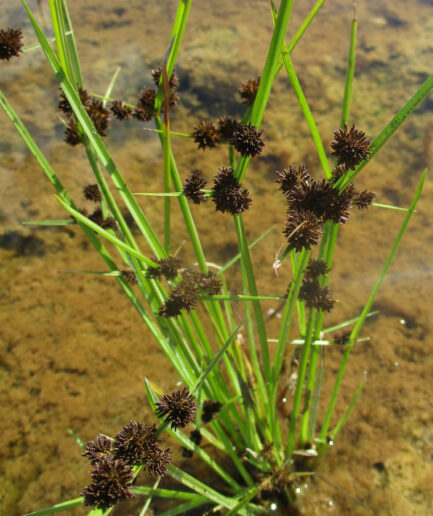Spreading sedge
Scientific Name: Carex praecox Schreber
Family: Cyperaceae
MORPHOLOGY
Habit and Size: Perennial herbaceous plant, 10-40 cm tall, with a long and slender rhizome.
Stem: Acutely triangular in cross-section, erect or slightly curved even after flowering, smooth or slightly rough at the upper part, with a diameter of 0.5-0.8 mm.
Leaves: Leaves are 0.7-1.4 mm wide, shorter than the stem (less than 25 cm), rigid, more or less rolled, rough at the edges towards the tip. Basal sheaths are scale-like, more or less intact, and light brown.
Flowers: The terminal inflorescence is short or capitate, 1.4-2.3 (2.9) cm long, with (3) 4-6 (8) simple spikes, 1-2 (2.5) mm long, contiguous, oblong, with female flowers at the top and male flowers at the bottom, with the lower spike rarely entirely female. Blooms from February to June.
Fruits and Seeds: Fruits are pseudanthia (utricle) 3-4 x 1-1.6 mm, pear-shaped, glabrous, plano-convex or rarely concavo-convex, with winged margins and slight veins, reddish-brown, tapering into a bifid beak of 0.5-1.5 mm, weakly rough-serrate.
DISTRIBUTION AND HABITAT
Found from Tuscany northward, excluding the Aosta Valley, and in Sardinia, Abruzzo, and Basilicata. Grows in dry meadows, scrublands, and fallow lands, from 0 to 1,500 meters.
Photo Credits: Licensed freely from iNaturalist





















